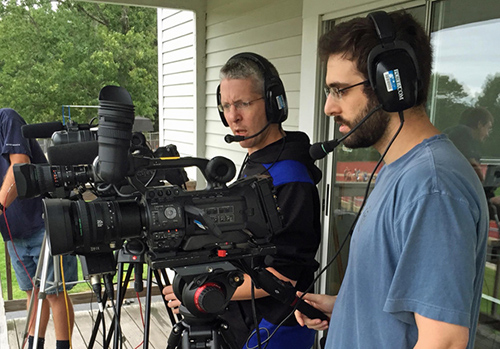Live and Local Is the Key
Broadcasters shine brightest when serving their local communities

Skip Pizzi, NAB’s vice president of technology education and outreach, simply nailed it during a NextGen TV panel at the HPA Tech Retreat in February.
“OTT is anything but live and local,” said Pizzi during the panel as reported by James O’Neal, TVTechnology correspondent.
“This live, local-focused service can co-exist on a more even parity in terms of quality and interactivity with those other [steaming] services. NextGen TV really gives broadcasters a level playing field going forward.”
Setting aside ATSC 3.0 for a moment, television broadcasters in the U.S. have always shone brightest when serving their local communities—both from a news point of view and as a commercial endeavor.
Sure, TV networks and cable news networks can swoop in to cover local stories of national prominence, such as the slow grinding progress of a hurricane’s destruction or devastation left in the path of a tornado.
But it’s always been the local broadcasters who—sometimes at risk to life and limb—are on the ground or in the studio delivering up-to-the-minute information live to viewers to help them remain safe while the destruction is happening and the news to help them pick up the pieces in the aftermath. (Read about WLOX in Biloxi, Miss., and WPXL in New Orleans during Hurricane Katrina for examples.)
Ditto the commercial side of the business. Yes, car and truck manufacturers, pharmaceutical companies and national politicians leverage network and cable TV to assemble and reach huge audiences.
But it’s the local broadcaster that gives area car dealers, grocery stores, pharmacies and local politicians the path to reach the people who matter most to them. (Watch the presentation of Abby Auerbach, EVP, Chief Communications Officer of TVB, during this webinar to learn what happened when a local car dealer cut off local TV ad spending in favor of digital alone. Let’s just say the dealer quickly reversed its decision.)
Now, layer on just some of the more obvious benefits of NextGen TV, such as microtargeting of viewers with commercials based on their interests and desires and tightly geotargeted emergency alerts to TVs that wake up in neighborhoods threatened by severe weather or some other potential catastrophe.
The picture that emerges is one of a future in which broadcasters not only can compete with OTT and digital media from what Pizzi described as “a level playing field,” but also can play best to their greatest strengths.
Speaking of localism, I wanted to give a tip of the hat to KMOV-TV and KSDK-TV in St. Louis. Both stations reported on the recent theft of catalytic converters from vehicles used by LifeBridge Partnership to provide door-to-door transportation for area children and adults with disabilities. Their stories mentioned the group’s GoFundMe page effort to raise $4,000 to cover replacement expenses not reimbursed by insurance and helped LifeBridge reach its goal.
Get the TV Tech Newsletter
The professional video industry's #1 source for news, trends and product and tech information. Sign up below.
Phil Kurz is a contributing editor to TV Tech. He has written about TV and video technology for more than 30 years and served as editor of three leading industry magazines. He earned a Bachelor of Journalism and a Master’s Degree in Journalism from the University of Missouri-Columbia School of Journalism.

